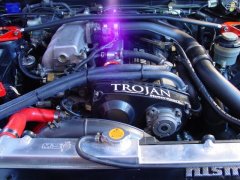What Have You Done To Your Stagea Lately?
Announcements
-
Similar Content
-
Latest Posts
-
Guys since i bought r33 gts25t coupe 1994 automatic a/t(manual swap 350z gearbox) all i got is problems, always problems. Lets start with that when i turn key into ignition(ON) fuel pump doesnt always works. Sometimes i have to turn key twice Off/on/off/on until it primes. Its new, dw300 - 340lph. My gearbox broke so i did gearbox swap, install different intake manifold, injectors and i take pipes. Car was sitting in garage for more than half a year. I did assembly all not that long ago and when i turn ignition cant hear prime. All of sudden it stopped working. Theres many videos on YouTube how to make relay mod on r33 straight from battery so i did and it doesnt work! 😰 30 - battery positive 87 - positive from fuel pump to relay 85, 86 - one of two wires from original fuel pump wires(light blue, grey) and it didn’t work. so I check on ignition and took original BLUE relays wires from trunk, next to fuses. (I believe it’s IGN+ and ECU pin 18. it didn’t work… tried connecting (IGN+ from og relay) and (ECU 104 from 1of4 FPCM wires) to my new relay 85/86 and it didn’t work. I unplug FPCM. Didn’t work. im thinking what’s wrong fuel pump is working, if I leave IGN+ on 85 and 86 straight to ground it works but it’s just nonstop. Since it getting constant 12v after key in ON. light blue wire gives me 6-8v. so how this should be connected? What causing ECU not giving — on pin? Or I did sth wrong and that’s why it doesn’t work? I need negative signal on ECU that control fuel pump. What this should be?
-
You can use your VIN to look up the factory part number somewhere like amayama, and then look to order new if necessary. https://www.amayama.com/en/genuine-catalogs/nissan Depending on price you might want to rebuild instead. @GTSBoy I had an interesting insight into US market parts when the Titan rear calipers were sticking. New calipers were dirt cheap, about 20% more than a rebuild kit....they are just considered throw away maintenance items
-
Funny, but really not funny. Thank god (most) f the world has moved on since then
-
Lots of votes for driving onto a plank first; that is the quickest way I've found, 25mm is enough for my case but that will vary by car It also depends where you are going for. On the 32 I can get to the rear diff with my floor jack if I do that end first, and get it up on stands. Then I lift the front from either front tow hook as high as needed, also onto stands. Sometimes I need a small lift on the other tow hook to get it level enough If I do the front first I can't get to the rear diff because of the angle of the car Other options are getting to the front mount of the rear subframe from in front of the wheel (if only lifting one side, or just do both which is a bit of a pain compared to one lift from the diff), or also the gearbox cross member mount on the driver's side if you are just trying to lift the driver's side. I This is the jack I use; it says 75mm clearance but of course that is only on the lower section so if you have to reach too far in like the diff you still get stuck. https://www.snapon-bluepoint.com.sg/category/Floor-Jacks/product/Floor-Jack,-2-Ton-Low-Profile
-





Recommended Posts
Create an account or sign in to comment
You need to be a member in order to leave a comment
Create an account
Sign up for a new account in our community. It's easy!
Register a new accountSign in
Already have an account? Sign in here.
Sign In Now